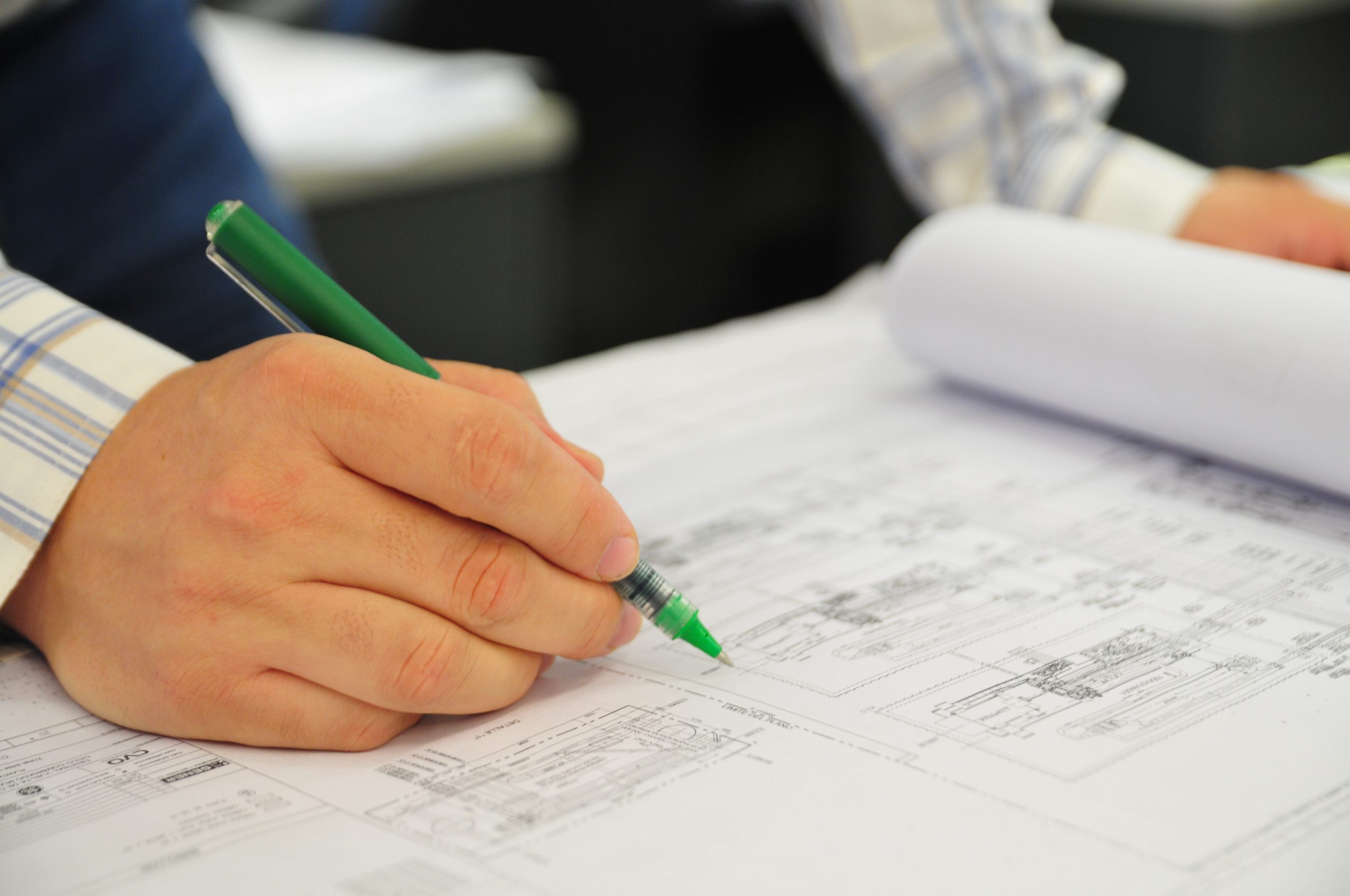
- Mobility & Infrastructures
Categories:
At Sener, we take part in various projects where decarbonisation is one of the primary objectives. In fact, the construction and refurbishment of zero-emission or carbon-neutral buildings is an increasingly established trend, given its importance in terms of sustainability, resource management and the comfort of residents, visitors and users.
The hospital sector, as a major energy consumer, is also moving in this direction, an area in which Sener has built up solid practical experience.
Towards zero-emission hospitals
The pursuit of zero emissions is becoming a priority in sectors such as construction and architecture and, of course, in hospital engineering.
A Net Zero Carbon Building is defined as one whose architectural design, construction systems and installations are conceived and sized so that the energy and carbon emissions balance resulting from its operation equals zero over the course of a year. This means that the building produces no direct CO2 emissions associated with the on-site use of fossil fuels, and that any residual energy demand is met entirely through renewable sources, whether locally generated (photovoltaic, solar thermal, geothermal, biomass) or through the purchase of certified energy with guarantees of origin.
Achieving this goal relies on adopting a range of measures that should ideally be implemented from the design stage of the project, although they may also be incorporated into refurbishment work aimed at improving energy efficiency.
The most important aspects to work on to achieve carbon neutrality in building projects are:
- Passive building design: high-performance thermal envelopes, solar control, airtightness, and bioclimatic strategies that minimise thermal loads.
- High-efficiency active systems: HVAC with heat recovery >80%, generation through latest-generation electric heat pumps (high COP/EER), LED lighting with automatic regulation, and intelligent demand management systems.
- Integration of renewables: sizing of photovoltaic, solar thermal or geothermal systems to meet as much of the energy demand as possible.
- Advanced energy management: BMS with continuous monitoring, predictive control algorithms and load optimisation.
- Residual compensation: if on-site renewable production does not cover 100% of demand, electricity purchased with guarantees of origin or certified emissions offsetting mechanisms are used.
Under these conditions, the building makes no net CO2 contribution to the atmosphere during its operational phase, ensuring climate neutrality in line with European regulations and international standards.
Sustainable design and energy efficiency
Sustainable building is based on well-established pillars that can be applied to almost any type of construction.
Of course, customisation is essential according to the needs of each building, but some of the more general features are as follows:
- Use of sustainable and recyclable materials.
- Priority of highly efficient insulation systems.
- Design that prioritises optimal orientation in line with the natural light available.
- Facades designed and built with materials that maximise natural light intake.
- Building planning that integrates with its surroundings and incorporates nature within, such as through vertical gardens or green roofs.
- Sustainable waste management.
- Installations tailored and optimised for the type of service they must provide, efficiently coordinated with the architectural design.
Sustainable building design has energy efficiency as one of its main components.
The use of climate control systems that rely on new technologies is essential to achieve this goal, while integrating them with renewable energy sources makes it possible to reduce carbon emissions to zero, among other advantages.
In addition, connection to a centralised building management system (BMS) ensures continuous demand monitoring, partial load optimisation, predictive preventive maintenance, and integration with energy efficiency algorithms based on artificial intelligence. All of this not only contributes to climate neutrality, but also enhances thermal comfort, indoor air quality, the building’s operational resilience, and reduces overall operating costs (OPEX).
Renewable energy and emissions reduction
Energy efficiency in buildings is based on the interaction between high-performance thermal insulation with low transmittance, thermal bridge control and high airtightness, and the use of advanced climate control systems with high seasonal performance values (SEER, SCOP). This combination provides the foundation for minimising the building’s overall energy demand.
However, results can be significantly optimised nowadays by incorporating installations capable of managing, in real time, the supply of thermal and electrical resources to the instantaneous needs of each space within a building.
Photovoltaic installations in hospitals make it possible to harness sustainable energy resources, reduce the consumption of energy from conventional systems and ensure a reliable service of guaranteed quality for both professionals and patients.
An increasingly established complement in these projects is the installation of aerothermal systems, a technology that harnesses a renewable source — the energy of ambient air — to provide heating, cooling and domestic hot water.
Aerothermal energy therefore represents a strategic solution for electrifying climate control and domestic hot water in buildings that produce no CO2 emissions to the atmosphere and in hospital settings, where reliability, efficiency at partial loads and integration with photovoltaic systems are key to achieving decarbonisation targets.
Decarbonisation and energy efficiency in hospital settings
At Sener, we develop comprehensive engineering solutions for hospital facilities with a strong focus on sustainability, energy efficiency and climate neutrality. Our experience allows us to implement strategies that significantly reduce the environmental impact of these centres’ operations.
Key strategies for carbon neutrality
Achieving a net zero carbon balance requires phasing out conventional boilers completely and, with it, eliminating our reliance on fossil fuels. This makes it possible to do away entirely with greenhouse gas emissions associated with thermal generation.
As an alternative, we propose integrating aerothermal and energy recovery systems. In real scenarios, more than 90% of the thermal energy used for climate control and domestic hot water production can come from heat recovery, delivering substantial annual energy savings. In hospital settings, such savings are feasible due to the simultaneous heating and cooling demands throughout the year, which allows for the optimal use of energy recovery systems, such as chillers with condenser heat recovery or multifunctional units.
Environmental impact and benefits
The application of sustainable design criteria in hospital facilities enables substantial improvements in their energy and environmental performance:
- High-efficiency, eco-friendly cooling systems with a low carbon footprint.
- Installation of photovoltaic systems capable of supplying a significant portion of the electricity associated with climate control.
- Thermal production technologies based on aerothermal energy, delivering very substantial annual water savings compared to traditional solutions.
- Greywater reuse systems.
- Complete elimination of fossil fuel use and reduction of direct CO₂ emissions to the atmosphere to zero.
Innovations and best practices in the sector
Today’s innovations provide the construction and design sectors with a viable path towards maximum sustainability and efficiency in any type of project.
By following best practices in this area, it is possible to achieve goals such as decarbonising hospitals or, more generally, constructing zero-emission buildings that also ensure optimal comfort for all occupants.
The number of strategies and resources that can be leveraged is on the rise, but in general, the most recommended guidelines or best practices for these projects include actions such as the following:
- The reuse of resources, particularly water, provides considerable savings while supporting other services such as irrigation for plants and gardens.
- Green roofs reduce internal heat in buildings and, therefore, the energy required to maintain thermal comfort. They also promote the creation of healthier private spaces.
- The building envelope and insulation are two key factors for a sustainable building.
- Production systems that do not rely on fossil fuels are essential to achieve a NetZero Hospital.
- Renewable energy sources and new climate control systems represent a profitable investment, both for the service they provide and for the energy efficiency they guarantee. They are applicable to any project and compatible with one another, allowing for even better performance.
- Decarbonisation








